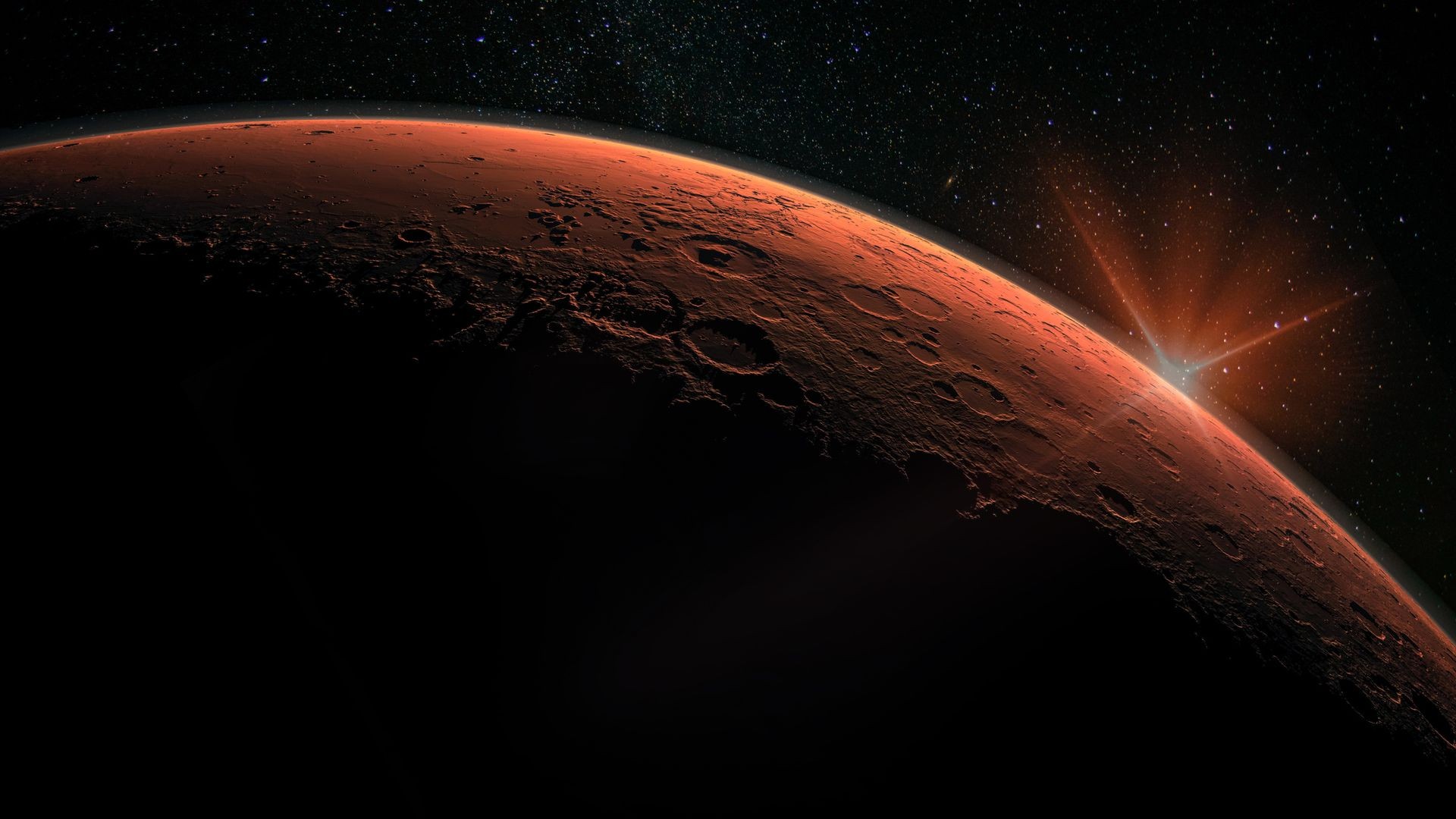Mars’ atmosphere is dramatically thinner than Earth’s, more than 100 times less dense. This stark difference has profound implications for the Red Planet’s climate, potential for life, and challenges for human exploration. Let’s delve into the specifics of this atmospheric disparity.
Mars’ thin atmosphere contributes to its cold, dry environment. (Image credit: Elen11 via Getty Images)
The Density Disparity: A 100-Fold Difference
The atmospheric pressure on Mars is a mere 6.35 millibars, a tiny fraction of Earth’s average sea level pressure of 1013 millibars. This signifies that Mars’ atmosphere is roughly 0.6% as dense as Earth’s. This extreme thinness stems from several factors, including Mars’ weaker gravity and the absence of a global magnetic field, which has allowed the solar wind to strip away much of its atmosphere over billions of years.
Composition Contrast: Carbon Dioxide vs. Nitrogen
Not only is Mars’ atmosphere significantly thinner, but its composition also differs drastically from Earth’s. While Earth’s atmosphere is predominantly nitrogen (78%) and oxygen (21%), Mars’ atmosphere is primarily composed of carbon dioxide (95.32%), with trace amounts of nitrogen (2.7%), argon (1.6%), and oxygen (0.13%).
Salt deposits on Mars hint at a watery past when the atmosphere may have been thicker. (Image credit: NASA/JPL-Caltech/MSSS)
Implications of a Thin Atmosphere
The thin Martian atmosphere has several critical consequences:
- Extreme Temperatures: The lack of a substantial atmosphere to trap heat leads to extreme temperature fluctuations on Mars, ranging from a comfortable 70°F (20°C) at the equator to a frigid -195°F (-125°C) near the poles.
- Limited Liquid Water: The low atmospheric pressure prevents liquid water from existing stably on the Martian surface. Water ice can sublimate directly into vapor without melting.
- Intense Dust Storms: Though thin, the Martian atmosphere can still support powerful dust storms that can engulf the entire planet for months, fueled by fine dust particles lifted by winds.
- Challenges for Human Exploration: The thin, carbon dioxide-rich atmosphere is unbreathable for humans and provides minimal protection from harmful solar radiation. Future missions will need to address these challenges for successful human exploration.
Mars’ longer year leads to extended seasons compared to Earth. (Image credit: NASA)
A Lost Atmosphere: Clues from the Past
Evidence suggests that Mars once possessed a much thicker, potentially more Earth-like atmosphere billions of years ago. Features like dry riverbeds and evidence of past liquid water point to a warmer, wetter past. Understanding how Mars lost its atmosphere is crucial for understanding the planet’s evolution and potential for past or present life.
Scientists study Mars’ current atmosphere to understand its past. (Image credit: NASA’s Goddard Space Flight Center)
Conclusion: A World of Differences
The stark contrast in atmospheric density between Mars and Earth highlights the unique challenges and opportunities presented by the Red Planet. While the thin atmosphere poses significant hurdles for human exploration and the search for life, it also offers a valuable opportunity to study atmospheric evolution and planetary processes in a dramatically different environment. Ongoing research continues to unravel the mysteries of Mars’ thin atmosphere and its implications for the planet’s past, present, and future.

